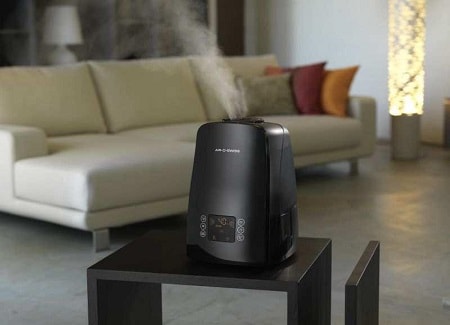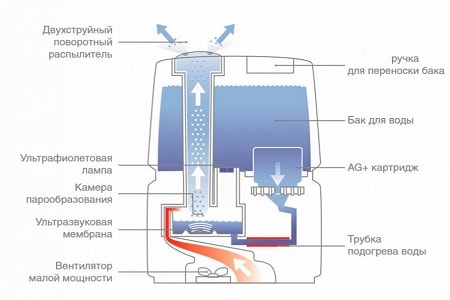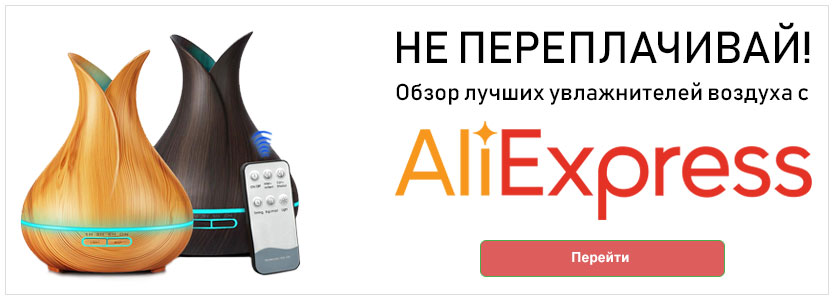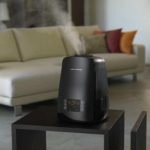We all strive to create comfort and harmony in our home. We make repairs, rearrangements, regular cleaning, try to surround ourselves with beautiful things. We are worried about keeping warm or cool. But do we pay enough attention to the cleanliness and humidity of the air we breathe in the walls of our house? But this is the most important parameter for our comfort and health! And that is why we have prepared for you an article about devices that help maintain a favorable microclimate, and we will tell you how does a humidifier work.
Air humidifiers - what is this device and what is it for?

A household air humidifier is designed to saturate the human environment with humid air. The problem of air humidity during the heating season or in countries with a constant warm climate becomes especially urgent.
Why is it so important? Dry air negatively affects our skin, mucous membranes, lungs and the general condition of a person. Dry skin ages faster and it also becomes more vulnerable to external influences. Dry mucous membranes cause considerable discomfort, and dry air in the lungs contributes to the development of various pathogens, which contribute to the accelerated development of lung diseases and the occurrence of complications. The phlegm that dry up in the trachea and bronchi interfere with the normal saturation of blood with oxygen, and, as a result, there is oxygen starvation of the body in general and the brain in particular. A person becomes lethargic, inactive, concentration of attention and memory are disturbed. But dry air is especially harmful to children, especially babies in the first year of life.
According to the research of doctors, comfortable air humidity in a house or apartment is from 40 to 60%, at temperatures from 18 to 22-24 °. A special device, a hygrometer, measures the level of air humidity. A simple humidifier helps to achieve the desired performance. Therefore, if you care about your health and the well-being of your family, you need to think about buying such an effective assistant.
![]() See also - What is a home humidifier for?
See also - What is a home humidifier for?
What kind of humidifiers are there?

So, we have already said that the main functional task of a humidifier is to "monitor" the level of moisture in the air that we breathe in our home. But different devices cope with this task in different ways. Evaporate water, create a wet mist, or blow air currents through wet membranes. Additionally, some devices can disinfect the air, saturate it with ions, fragrances, or even remove dust particles and allergens.
That is, they can be divided into:
- traditional or “cold” evaporation humidifiers;
- steam;
- ultrasonic.
Let's take a look at all these types of devices in order.
Cold steam humidifiers
Sometimes such devices are called “air washers”. Their principle of operation is simple, they drive air flows through wet membranes, thereby saturating a person's living space with moisture.It is an easy-to-use and cheap way to increase the humidity level in your apartment or house.
They need to be washed periodically, but you can fill in with plain tap water. Some humidifiers have replacement cartridges with an antibacterial coating and they also need to be replaced. But the simplest devices do not include consumables.
The device works almost silently, consumes a minimum of electricity, but is not able to accurately control the humidity level in the room. In addition, the air will be cleared of dust, but most likely not from odors and microorganisms.
Steam humidifiers
From the name, you can generally understand the principle of operation. Such a device boils water, and saturates the air in an apartment or house with evaporation vapor. Modern steam humidifiers are made of heat-resistant plastic and equipped with an insulated heating chamber. The electrodes boil water, and then the steam spreads throughout the room. If there is not enough water, the electrical circuit will not close and the device will turn itself off.
In addition, a working steam humidifier effectively fights microorganisms in the air, because streams of hot steam can destroy most bacteria and viruses. Such a device is often equipped with a special container for a scented liquid, for example, an essential oil, and is used as a fragrance inhaler.
But boiling water requires significant energy consumption, and hot steam can burn and harm human health. This device is not recommended for use in families with children. And the bedroom is not the best place to use a steam humidifier - the bubbling of water when it boils can disrupt your sleep.
Ultrasonic humidifiers
It is this type of humidifier that is most popular today. As a rule, the ratio of price and quality of such a device is the most optimal. They are reliable, productive and versatile. Let's take a look at how a humidifier works.
There is a piezoceramic plate with nickel electrodes inside the device. A current flows through the nickel, which causes the plate to vibrate at a constant and high frequency. The result is sound waves that are indistinguishable to our ears and completely harmless. It is the sound waves that break the water into small particles and carry this water dust around the room using a small fan built into the device. You can compare the action of ultrasound with a spray bottle that "sprays" the air in an apartment or house.
These capabilities are currently the most efficient and cost-effective way to maintain the desired moisture level in homes. Working ultrasonic humidifiers consume a minimum of electricity and are practically silent. The water tank will last for 20-22 hours of continuous and effective air humidification. Most models are equipped with an ultraviolet lamp for water and air disinfection and a built-in hygrometer. However, you should check the readings of such a device with an independent meter, because a hygrometer near a humidification source is not always able to correctly recognize the level of humidity in the air.
The only caveat when using an ultrasonic device may be the need to pour only boiled or distilled water inside. After all, salts, which are rich in tap water, will leave whitish stains on furniture. And with them it is not so easy to fight. However, you can buy an ultrasonic one with built-in filters and water softeners, then the issue of distillation or boiling will disappear by itself.
![]() See also - DIY air humidifier care and cleaning
See also - DIY air humidifier care and cleaning
How to Choose the Best Humidifier?
Whether your electronic assistant will be "hot", "cold" or "ultrasonic" - you decide.But there are some general recommendations that will help you make the best choice of a humidifier for home use:
- Choose a device "with a margin", it is better if it is intended for large areas than the size of your room.
- Pay attention to its power consumption.
- Trust trusted brands and brands - then you can count on a reliable and durable device. And in the event of a breakdown, it can be quickly repaired at a specialized service center.
- Pay special attention to operational safety. Auto shut-off system, water level sensors, blocking are not superfluous functions. Give preference to models with water and air purifiers and filters.
- Listen carefully to the work of your future purchase, because you have to live with it and even sleep with it. More precisely, to sleep while this device is operating. Will you be comfortable near such a noise source? Sometimes noise and even display backlighting can interfere with the proper rest of adults and children, and, as a result, a useful device as a whole is sent to the shelf instead of effective help.
Confident that now that you knowhow a humidifier works, it will be much easier for you to choose an effective and profitable device for maintaining a healthy microclimate. Choose wisely and enjoy the clean and cool, and most importantly, humid air within the walls of your home. Health and harmony to our readers!
![]() See also - Rating of home air purifiers and humidifiers
See also - Rating of home air purifiers and humidifiers


